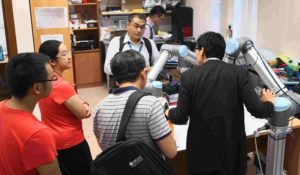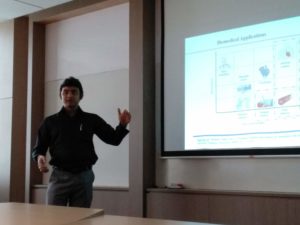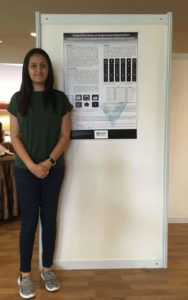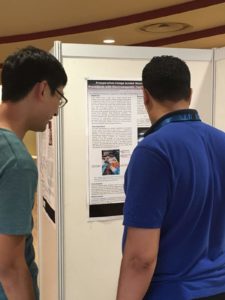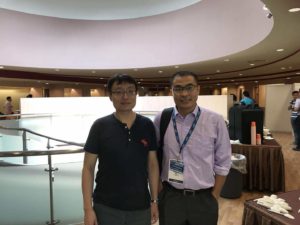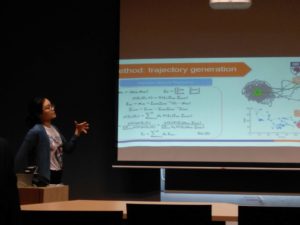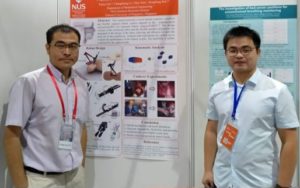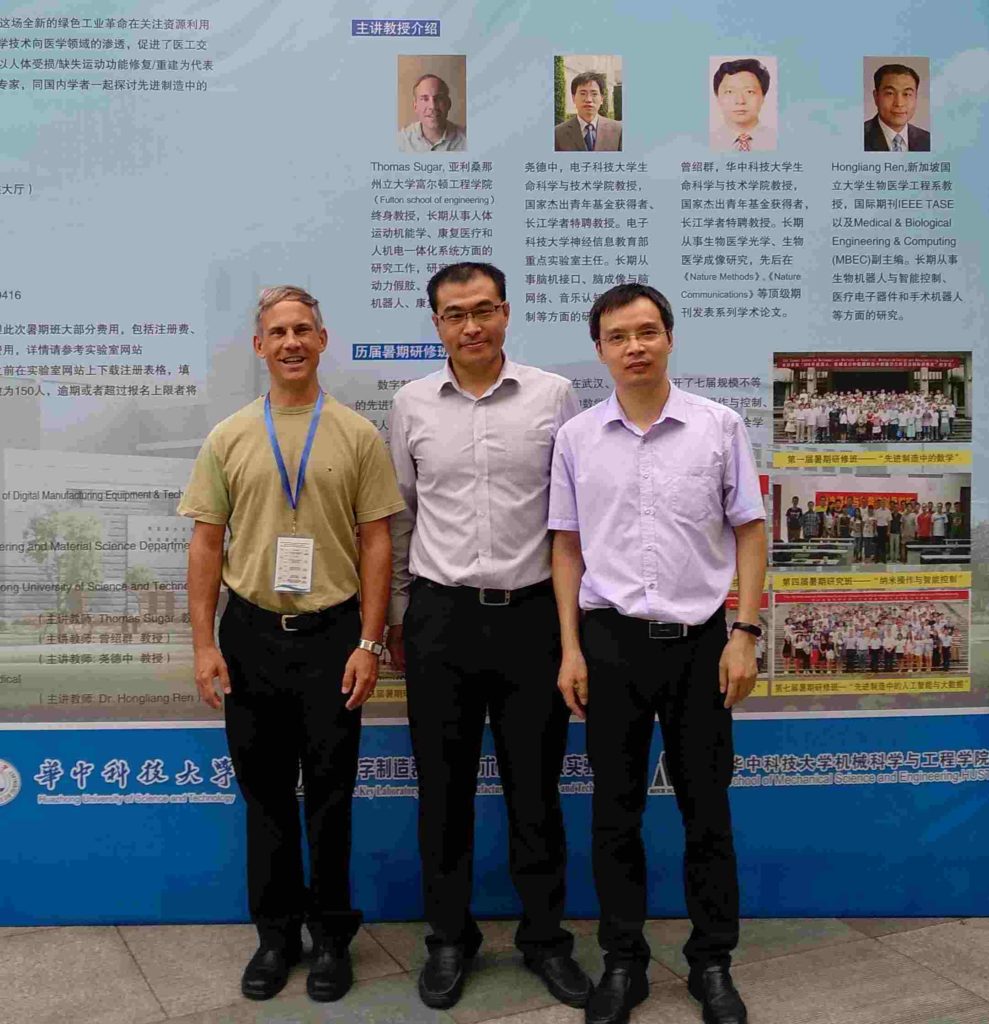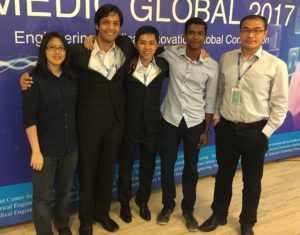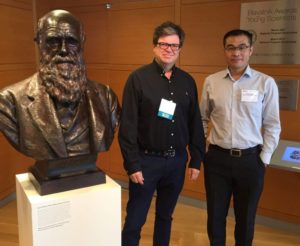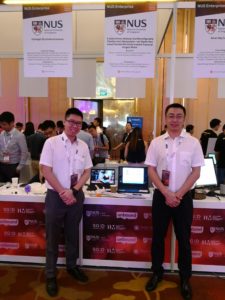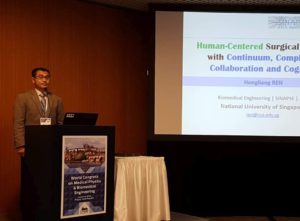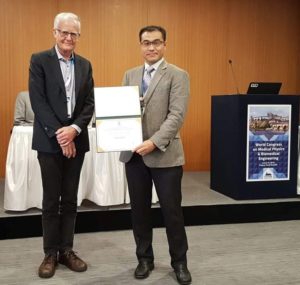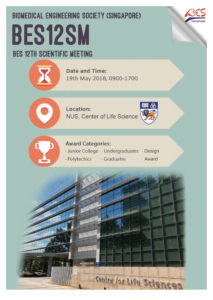Our team members were presenting research publications and doing lab demos during IEEE ICARM 2018 (The IEEE International Conference on Advanced Robotics and Mechatronics).
| authors | title |
| Sri Sai Krishna Suraj Narapareddi, Vineeth Muppalla, Parita Sanghani and Hongliang Ren | Comparative Study of Unsupervised Segmentation Algorithms for Delineating Glioblastoma Multiforme Tumour |
| Avi Srivastava, Hongliang Ren and Liang Qiu | Preoperative-Image Guided Neurosurgical Navigation Procedures with Electromagnetic Tracking: An Effective Pipeline and A Cadaver Study |
| Abhishek Bamotra and Hongliang Ren | Characterization and Fabrication of Novel Soft Compliant Robotic End-Effectors with Negative Pressure and Mechanical Advantages |
| Hritwick Banerjee, Oh Yao Wei Aaron, Bok Seng Yeow and Hongliang Ren | Fabrication and Initial Cadaveric Trials of Bi-directional Soft Hydrogel Robotic Benders Aiming for Biocompatible Robot-Tissue Interactions |
| Shradha Singhvi and Hongliang Ren | Comparative Study of Motion Recognition with Temporal Modelling of Electromyography for Thumb and Index Finger Movements aiming for Wearable Robotic Finger Exercises |
| Wenjun Xu and Hongliang Ren | Human Palpation Behavior Modeling with Mixture Models: Towards Autonomous Robotic Palpation |



